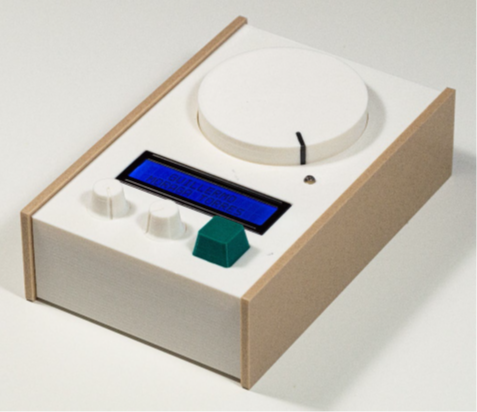AUTOMATED ROTARY PLATFORM FOR THREE-DIMENSIONAL RECONSTRUCTION USING PHOTOGRAMMETRY
Description
In recent years, various techniques for the three-dimensional digitization of objects have been developed, both small and large-scale, which have meant a great advance in the world of engineering. However, these technologies are generally out of reach for most of the public as they require highly specialized equipment and qualified personnel.
Aerial photogrammetry is a technique that has traditionally been used in cartography, applied to large areas of land. Currently, advances in digital photography and the creation of specialized software have allowed the development of close-object photogrammetry, this being a much more accessible 3D reconstruction method for three-dimensional scanning of small-scale objects than other alternatives. A determining factor in developing a near-object photogrammetry process is the surface texture of the object. 3D scanning techniques require that the surfaces of objects have a heterogeneous texture in which reference points can be easily found. Smooth or shiny objects are not suitable for scanning without first treating their surfaces. In photogrammetry, this is not a limitation.
For this reason, the implementation of an automated turntable is proposed that allows taking photographs of small objects from different angles in order to reconstruct them three-dimensionally using the near-object photogrammetry technique.
Advantages
The proposed invention arises as a solution to the problem of three-dimensional reconstruction of objects and deals with the implementation of a platform controlled and synchronized with the camera by means of a microcontroller and constitutes a tool that optimizes the capture of photographs of small-scale models.
The platform rotates the object to be reconstructed three-dimensionally a certain number of times around the vertical axis (Z), stopping for the necessary time to be able to capture the photograph before advancing to the next position and is connected to the camera by means of an infrared LED, in order to send the order to take a picture every time the object reaches one of the desired positions. The user will be able to configure the number of photographs that he wishes to capture and the time interval that the platform must wait until it advances to the next position, in addition to being able to start and stop the process whenever he wishes.
The platform is created using a modular design in which all the components can be easily separated, the rotating part of the machine, attached to the axis of rotation by magnets, is easily interchangeable with others of different sizes, without the use of tools. The top of the case can be completely removed with the included potentiometers, knob, LED and LCD display. It consists of a lithium battery that allows its use anywhere and is located in a closed compartment with a lid and isolated from the rest of the components.
Uses and Applications
This device is specially designed for use in 3D digitization processes, with applications in the field of prototyping and additive manufacturing.
Keywords
Sectors
Areas
Patent Number
ES1312707U Expediente
Applicants
UNIVERSIDAD DE MÁLAGA
Inventors
GUILLERMO SALVADOR MORAGA TORRES, MARIA JESUS MARTIN SANCHEZ, FRANCISCO DE SALES MARTIN FERNANDEZ
Filing Date
06/10/2022
Protection Level: National (Spain)
Processing Status: Spanish utility model








